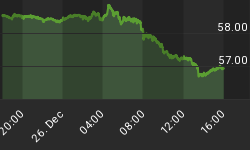Why look for complexity when there is simplicity?
In a recent piece by Robert Rodriguez of First Pacific Advisors, LLC, you will see facts - simple facts about how simple what happened is.
Here are some obvious ones:
"Since 1965, the median dollar volume of single-family homes sales as a percentage of nominal GDP has averaged 8.4% versus 16.3% at the 2005 peak."
"Between 1998 and 2006, with the major changes occurring in the last two or three years: ARM % of originations rose from 0.7% to 69.5% Negative Amortization rose from 0% to 42.2% Interest Only rose from 0.1% to 35.6% Silent Seconds rose from 0.1% to 38.7% Low Documentation rose from 57% to 79.8%."
AND TO THINK MOODY'S AND S&P WERE USING HISTORICAL DEFAULT MODELS. WHY USE HISTORICAL MODELS IF YOU ARE EXPERIENCING NON-HISTORICAL LENDING PATTERNS? OUTRAGEOUS!
What is wrong? Well, everyone wanted the rating agencies to rate everything highly; otherwise it wouldn't sell! So everyone agreed to look the other way.
It's as if the authorities have been sitting in a casino for years and now declare that they are shocked that gambling is occuring.
Put simply, there was massive overlending by the banks aided and abetted by the Fed. Now the major banks are starting to complain, because they run the risk of losing a huge amount of money, because they overlent in a risky environment. Thankfully, there are plenty of structures within the system (like Moody's and S&P) that allow them to lay the blame elsewhere and cry out that systemic risk is upon us and contagion may happen.
Why look for complexity? Bernanke is starting to doubt his inflation forecasting models and he is talking about academic concepts (like the "sacrifice ratio") as a way of preparing for interest rates cuts, even in the face of the continued threat of inflation and a plummeting dollar.
As The "Great" Mogambu Guru writes:
"For an example of more academic crap, he [Bernanke] said that the Fed uses the 'sacrifice ratio' in policy deliberations, which is an academic concept that the Federal Reserve uses to justify never raising interest rates. Essentially, the sacrifice ratio (according to investopedia.com) is 'An economic ratio that measures the costs associated with slowing down economic output to change inflationary trends. The ratio is calculated by taking the cost of lost production and dividing it by the percentage change in inflation.'
"The rationale is provided when we learn that, 'If inflation is becoming a problem, central banks will try to cool economic growth in a bid to reduce inflationary pressures. However, this reduction in output costs the economy in the short term, and the sacrifice ratio tries to measure that cost.' Hahaha! Attempting to measure pain, as if it is just a matter of using a few constants in a few equations! Hahaha!
"The funny part - as in 'I can't believe I am hearing this crap!' - was when he announced that the Phillip's Curve was dead, and then repeatedly used it to show how inflation would come down! Hahaha! Too, too much!"
In my opinion, to help Bernanke's friends at the big banks means he has to overthrow the important inflation lessons we learned in the 70s. To do so, Bernanke must academically define a new paradigm to justify his irresponsible actions. Why, he will aruge, fight inflation if it means a painful recession? Of course, it was the Fed who created the threat of inflation in the first place, by irresponsibly creating massive money supply growth!
The Fed is a political organization. Bernanke is a politician. If you look at him through the complex eyes of an economist you will miss the point. The point is that the power structures are putting political pressure on him to lower interest rates and he is shifting the academic landscape to accomodate them.
Simple.
None of this is good for the dollar nor the long-term inflation outlook, but it is good for bankers and their bonuses. The questions are "have the bankers learned their lesson? Or will they continue to overlend?"
















